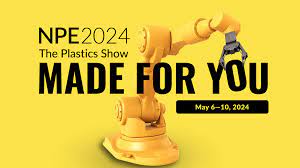THIS INTERNATIONAL ON DEMAND SUMMIT IS AN INDUSTRY… More
Italy’s Automotive Industry

2,500 companies, over 160 thousand employees and more than Euro 100 billion in total revenues. These are some of the key figures of the Italian automotive industry which ranks 6th in Europe and 19th in the world for production, and 4th in Europe and 9th in the world for sales. 65% of motor vehicles manufactured in Italy are sold abroad. The automotive industry has played and continues to play a very important role in Italy’s economy. Italy’s automotive value chain encompasses the vehicle, system and component design, manufacture and marketing for both the OEM and aftermarket segments.
The sector is grouped into three main segments:
a) The automobile segment accounts for 59% of the total sector revenue.
b) The component segment is the second largest by revenue, accounting for 30% of the total. In 2018, this segment’s revenue grew by 3.3% year-on-year to €32.5 billion. In 2019, for the automotive components segment, exports remained broadly stable year-on-year (- 0.4%), amounting to €14.0 billion; imports fell by 2.8% in value year-on-year to €8.6 billion.
c) The commercial vehicles, trucks and buses segment recorded aggregate revenue of €11.2 billion in 2018, broadly stable (+0.2%) year-on-year.
The motor vehicles production is privy to a few large Italian-based and international assemblers. Foreign multinational brands are active
in the country through commercial subsidiaries or through partner importers and distributors. The component segment, on the other hand, is populated by many different companies, including numerous small to medium-sized businesses, spread throughout the country.
Cooperation and partnerships between companies along the supply-chain are crucial, enabling firms to split the burdensome costs required to research, develop and manufacture increasingly advanced products, by having each partner use its specific skills and know-how. This collaborative orientation is favoured by geographical proximity and the concentration of the automotive industry in four main regional clusters;:
The industrial district in Piedmont, dominated by Stellantis (ex FCA group). Piedmont based component producers account for around 45% of the national automotive sector’s total revenue;
The “Motor Valley” in Emilia Romagna, where the world renown Italian luxury brands are produced;
Lombardy, where there is a high concentration of component manufacturers, especially in the province of Brescia.
The Abruzzo automotive industry district, which is active in new technological developments for motor vehicles and transportations
The component segment is highly influenced by auto manufacturers’ strong bargaining power over most of their suppliers. Furthermore, carmakers ensure that most of the costs and uncertainties associated with technological innovations are kept on component suppliers’ shoulders. The supply side can be broken down into three ‘grades’ of parts suppliers, as follows:
Grade A: suppliers of complete modules and systems that have direct relationships with vehicle manufacturers: they oversee and assemble entire modules, reducing the manufacturer’s need to coordinate each step in this process, and thus simplifying component management for them; they design integrated systems (e.g. brakes), concentrating heavily on technological innovation; there are not very many of these businesses due to high entry barriers in the form of
massive resources needed for R&D activities;
Grade B: suppliers of single components with a high degree of complexity, such as brake discs, brake callipers or sensors;
Grade C: suppliers of components characterised by a
low degree of complexity: these businesses work mainly as sub-suppliers for ‘A’ and ‘B’ component companies and more rarely as direct suppliers to vehicle manufacturers (e.g. for cables and wiring, fittings and plastic parts).
The extent of vertical integration is moderate. Auto manufacturers have progressively spun off their component production activities, forming independent businesses.
In recent years, there has been a growing need for more extensive interaction between major component producers and companies that operate outside of the automotive sector. This is due to increasing demand for digital applications to be installed in vehicles – whether for communications, information systems, safety and security or entertainment.
R&D expenditures in the motor vehicle manufacturing sector account for 12.6% of all R&D investments in Italy. Approximately €2 billion is spent on R&D by the automotive industry in Italy. Globally, Italy ranks 9th for the intensity of its automotive R&D investments.
Over the coming years, the following major developments observed will influence the automotive sector:
Sustainable mobility;
Security systems and self-driving cars;
Connectivity and in-car services;
Car sharing;
In Europe, according to preliminary results compiled by the European Automobile Manufacturers’ Association (ACEA), 1,753,307 sustainable mobility and new alternative fuel vehicles were registered in 2019; this figure is 41% higher than the 2018 total. Breaking down these registrations by fuel type, there were 564,225 fully electric (ECV) cars, 365,372 battery-powered (BEV plus fuel cell) cars, 198,853 plugin hybrids, 931,801 HEV mild-full hybrids, and 257,281 gas-powered cars (natural gas, GPL or E85).
Alternative fuel vehicles have gained popularity in Italy, which was the second-leading market for new alternative fuel car registrations in Europe in 2018. According to the latest data available (from ANFIA), cars powered by
alternative fuels accounted for 15.7% of all new car registrations in 2019, up from 13.3% in 2018. The biggest year-on-year increase was recorded by electric cars (+113.4%), followed by hybrids (+34.1%), but other mixed-fuel car registrations also showed year-on-year growth (petrol-LPG up 8.8% and petrol-methane a more modest 3.2% increase). With regard to sustainable mobility, the electric engine components are a primary recipient of R&D resources. The shift towards alternative fuel vehicles brings about inevitable changes in assembles and OEMs supply-chains.
Parallel to the growing popularity of alternative fuel cars, infrastructure investments have been required, including charging stations (both public and private); such investments have been and continue to be uneven across the country, with a much greater concentration of stations located in the north. According to national electricity provider ENEL, there are currently 11,169 electric car charging stations in the country, and ANFIA claims that it would be optimal to have at least 30,000 stations installed by 2021, at least 170,000 by 2025 and 560,000 by 2030.
Based on the OECD’s data on foreign direct investments (FDI), the stock of inward FDI into Italy in the “manufacture of motor vehicles, trailers and semi-trailers” sector made up 3.9% of the total investments in the country. Over the two years 2017-2018, FDI inflows had exceeded outflows in the automotive sector. In 2018, inward automotive FDI stocks rose by 5.2% from 2017 to reach a value of $16.693 billion.
There are 186 active automotive sector companies in Italy that are at least partially foreign-owned. The majority of these firms are located in the north. They employ a total of 7,958 workers and their combined annual revenue is over €1.1 billion. It should be noted that 153 of those 186 companies, foreign ownership constitutes a majority of the share capital.
The information above was part of an in-depth report compiled by Cerved Group for Invitalia and the Italian Trade Commission - ITA Invest in Italy program. To learn more about business and investment opportunities in the automotive industry in Italy, please contact toronto [at] ice.it ?subject=Machines%20Italia%20Newsletter">toronto [at] ice.it
Related Articles:
Recent News
POSTED ON

























